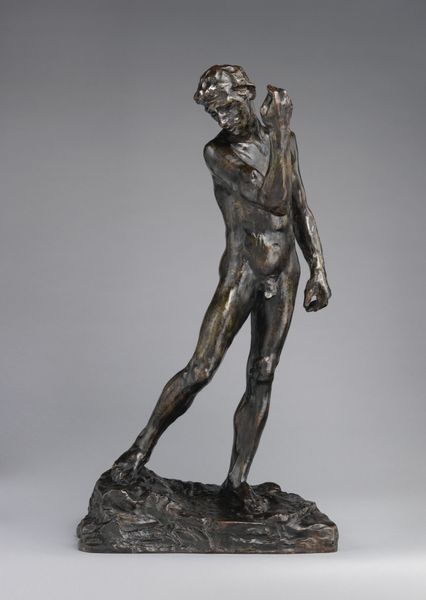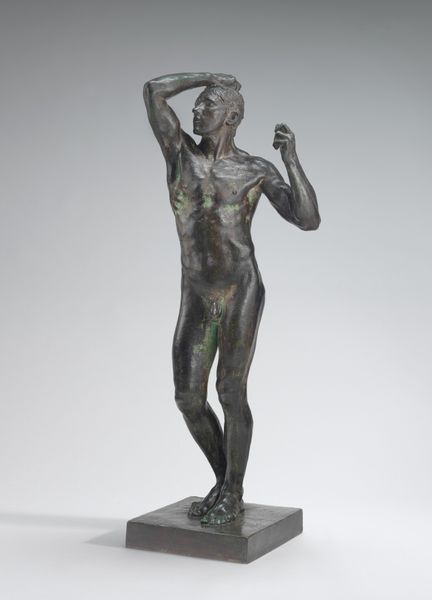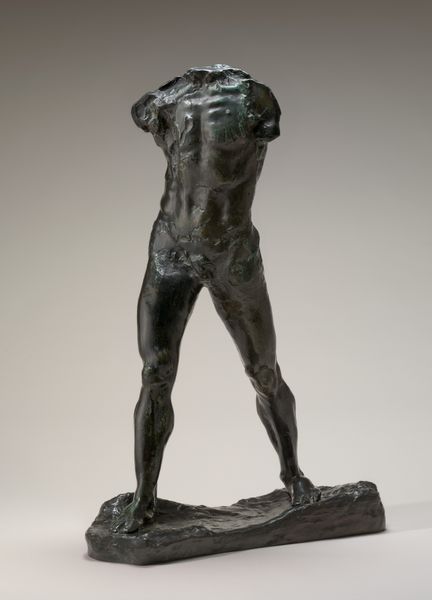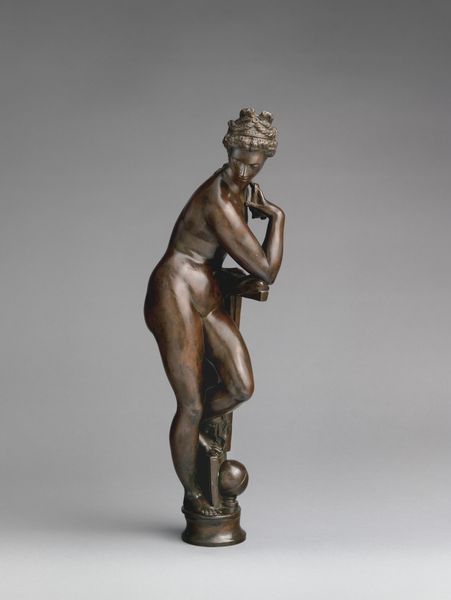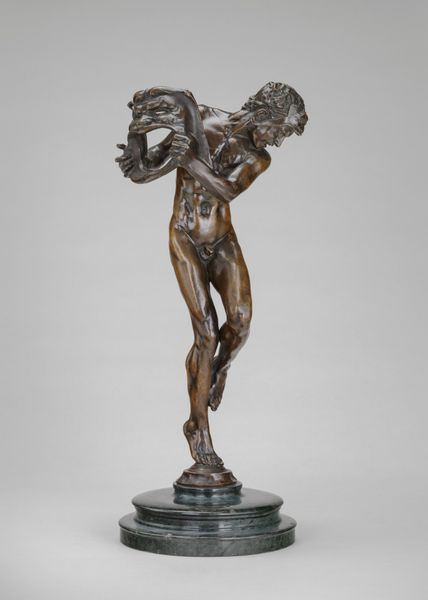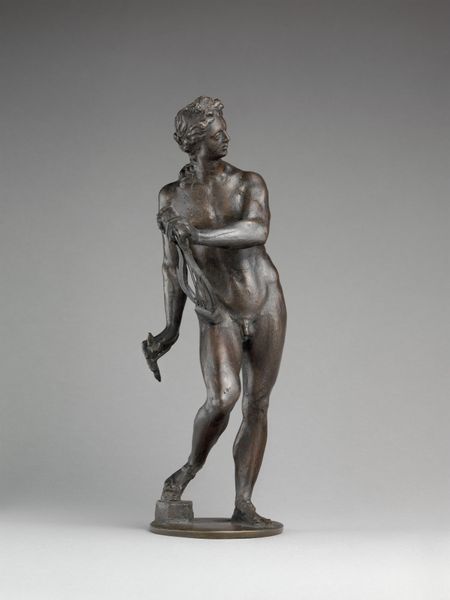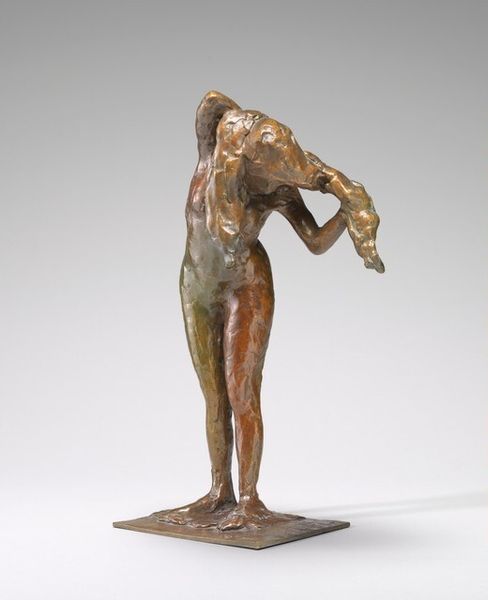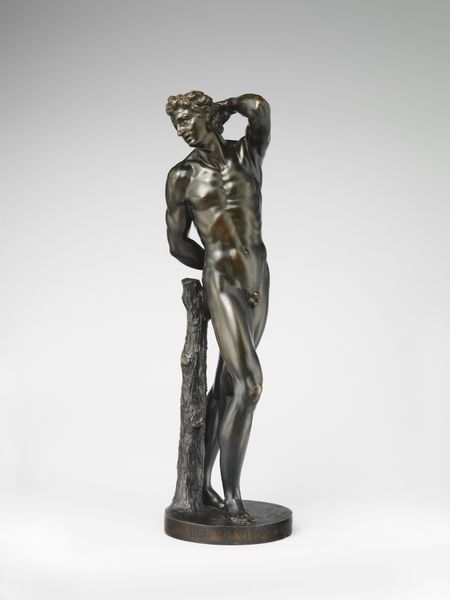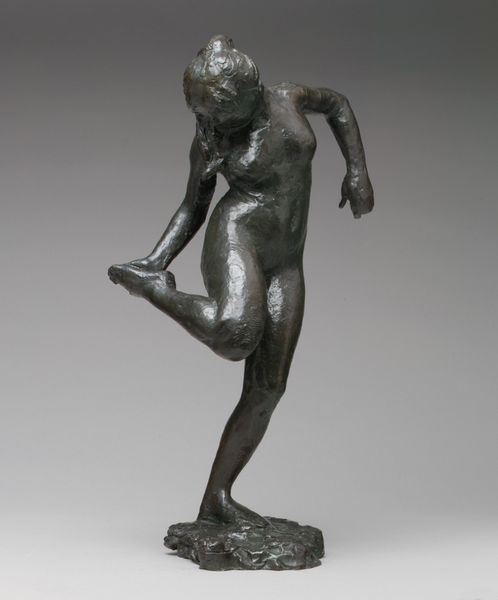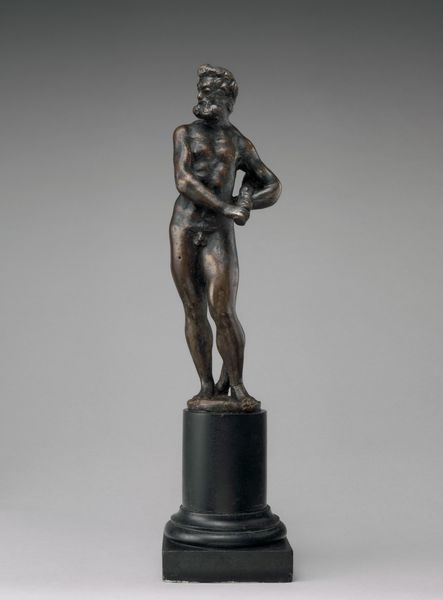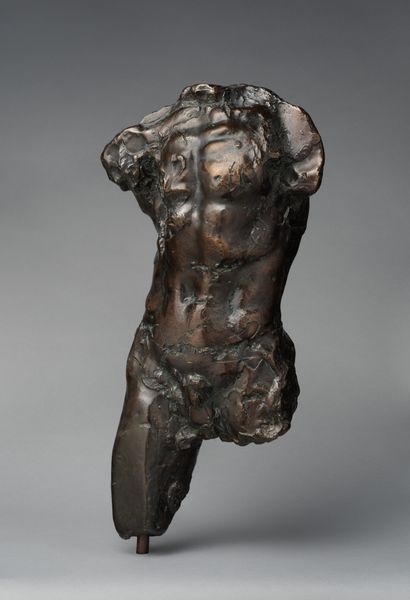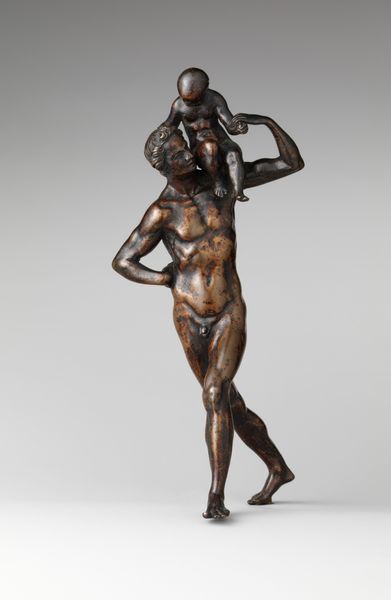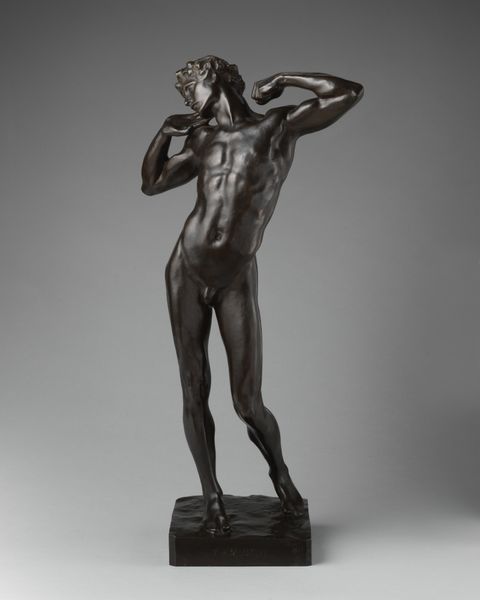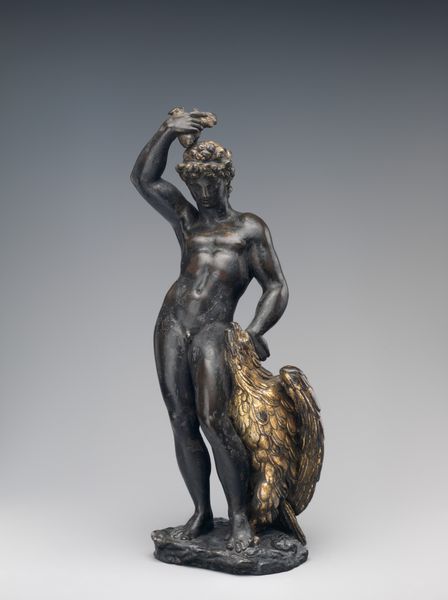
Dimensions: Overall (wt. confirmed): 33 1/2 in., 63 lb. (85.1 cm, 28.6 kg)
Copyright: Public Domain
Auguste Rodin sculpted this bronze figure, The Walking Man, during a period of significant social and political change in France. The late 19th century saw the rise of industrialization and urbanization, and a growing sense of alienation among individuals. Rodin presents us with a figure that is both incomplete and powerful, lacking arms and a head, yet conveying a sense of forward momentum. This sculpture challenges traditional representations of the male nude, which often emphasized idealized beauty and heroism. Instead, Rodin offers a raw, fragmented portrayal of the human form. The Walking Man invites us to consider the body as a site of struggle and resilience, reflecting the experiences of ordinary people navigating the challenges of modern life. It encourages us to contemplate our own journeys, both physical and emotional, and the ways in which we strive to move forward despite the obstacles we face.
Comments
No comments
Be the first to comment and join the conversation on the ultimate creative platform.
